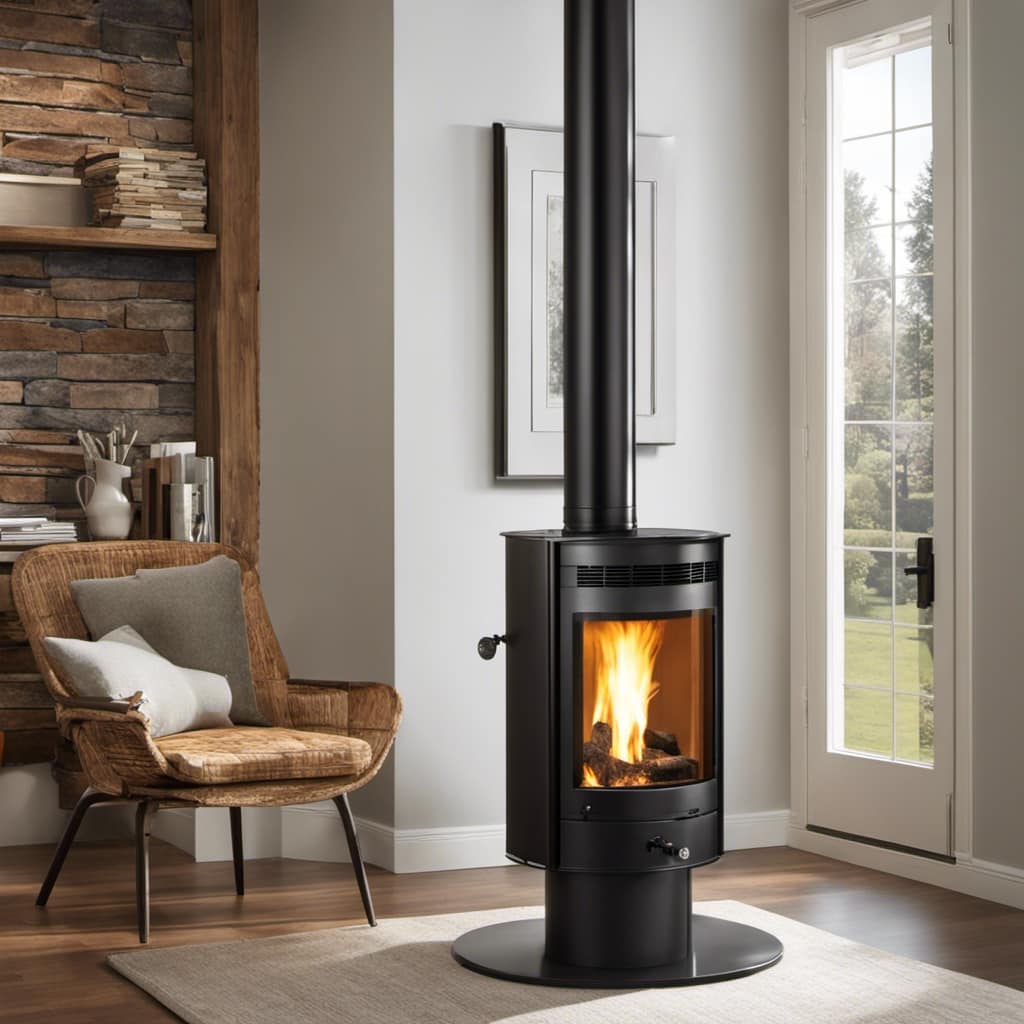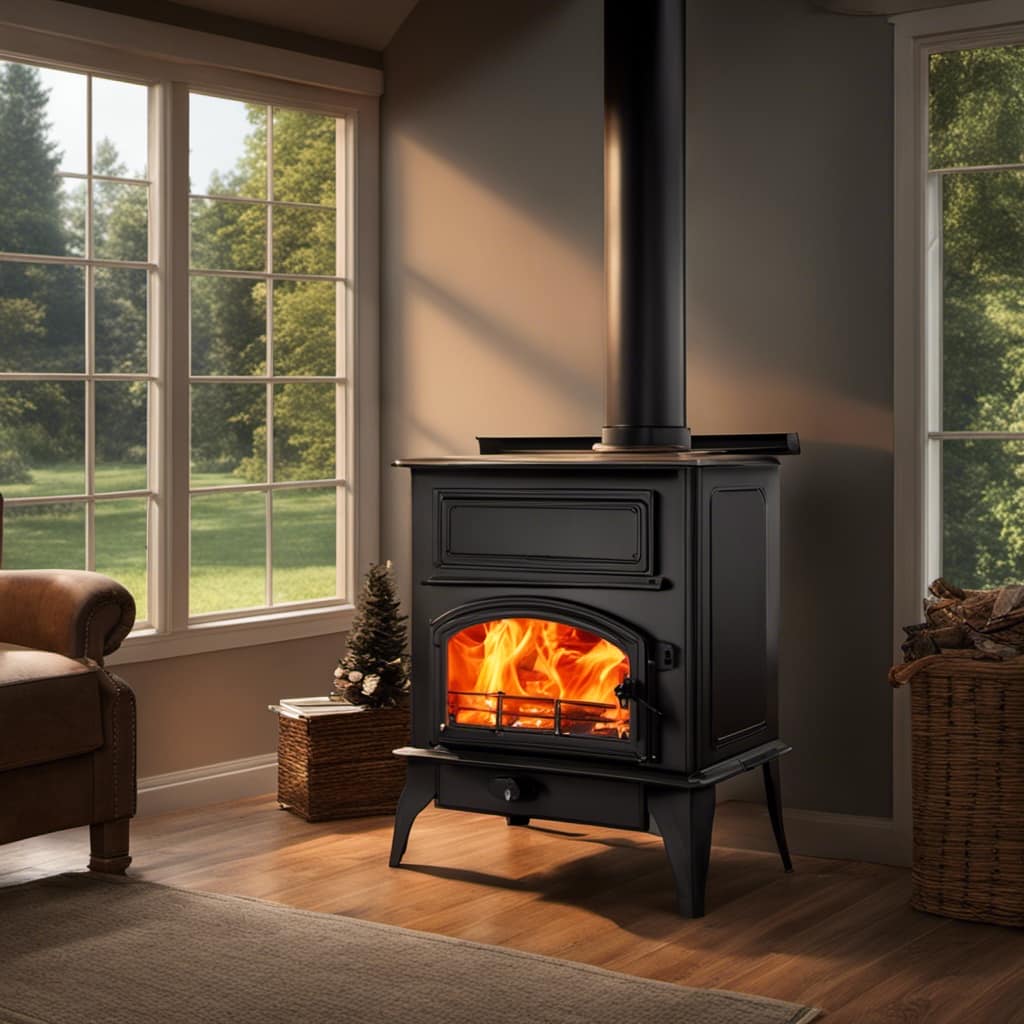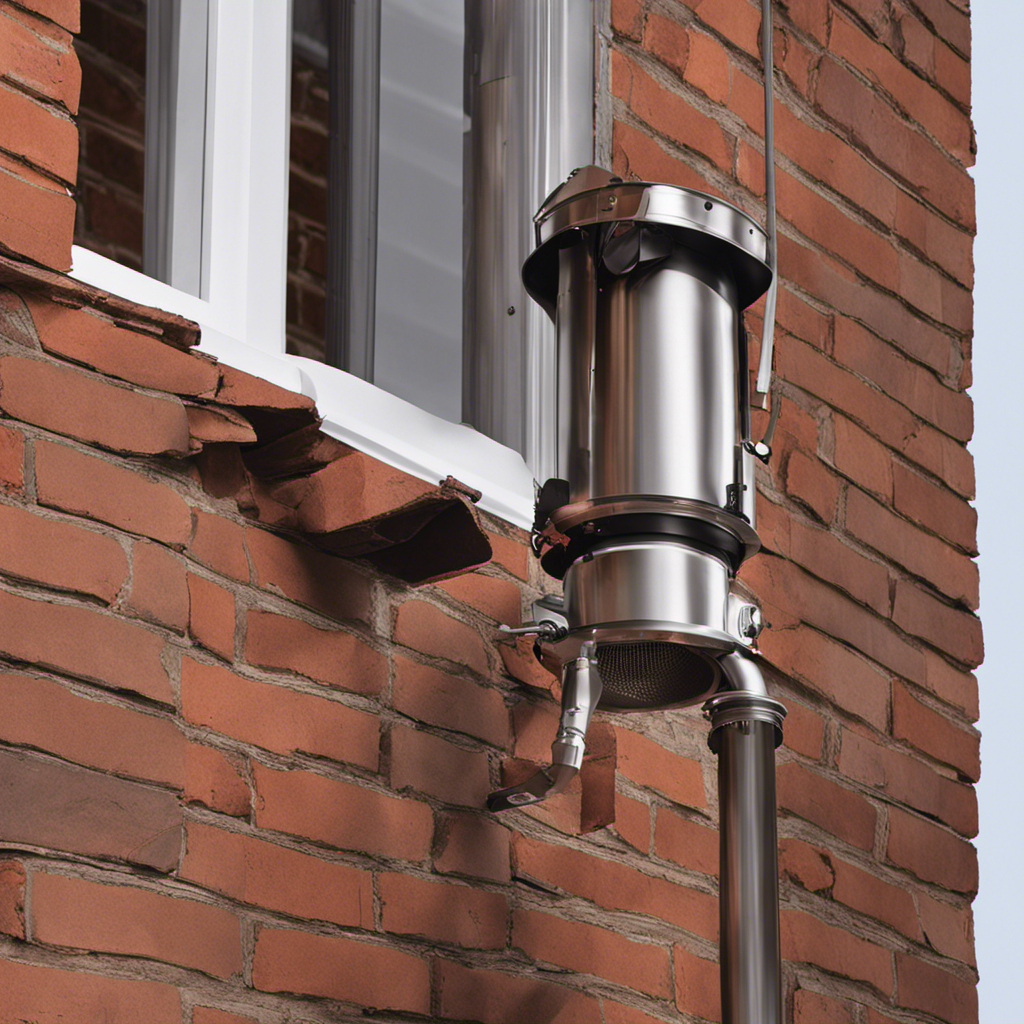As a passionate advocate for wood stoves, I understand the significance of choosing the correct pipe to enhance performance. While it may not be obvious, the choice of pipe can greatly affect the efficiency and safety of your wood stove.
In this article, I will guide you through the different types of pipes available, highlight key considerations when making your choice, and explore the advantages of single wall versus double wall pipes.
So, let’s dive in and find the perfect pipe for your wood stove!
Key Takeaways
- Single wall pipes are more affordable but require larger clearance to combustible materials and can get extremely hot.
- Double wall pipes have an inner and outer layer with insulation in between, reducing outer surface temperature and improving safety.
- The material of the pipe should be durable and heat-resistant, such as stainless steel or double-walled black stovepipe.
- Insulated pipes help minimize heat loss, improve wood stove efficiency, and provide enhanced safety.
Types of Pipes for Wood Stoves
I’m currently researching the different types of pipes for wood stoves. When it comes to installing a wood stove, choosing the right type of pipe is crucial for proper ventilation and safety.

There are two main types of pipes commonly used: single wall and double wall. Single wall pipes are made of a single layer of metal and are typically more affordable. However, they require a larger clearance to combustible materials and can get extremely hot.
On the other hand, double wall pipes have an inner and outer layer with insulation in between, which reduces the outer surface temperature and improves safety. They’re more expensive but provide better heat retention and efficiency.
As for maintenance requirements, it’s important to regularly inspect and clean the pipes to prevent creosote buildup, which can lead to chimney fires. Additionally, ensuring proper installation and following manufacturer guidelines is crucial for safe and efficient operation.
Considerations for Choosing a Pipe
One important consideration when choosing a pipe for a wood stove is the material it’s made of, as well as its compatibility with the stove and chimney. Here are some key points to keep in mind:

-
Material: The pipe should be made of durable and heat-resistant materials such as stainless steel or double-walled black stovepipe.
-
Size: Ensure that the pipe’s diameter matches the stove’s outlet and the chimney’s opening for proper airflow.
-
Insulation: Insulated pipes help to minimize heat loss and can improve the efficiency of your wood stove.
-
Ventilation: Proper pipe installation requires careful planning to ensure that the pipe is installed at the correct angle and with the appropriate clearances.

-
Maintenance: Regularly inspect and clean your wood stove pipes to remove creosote buildup and prevent chimney fires.
Single Wall Vs Double Wall Pipes
I prefer double wall pipes for my wood stove because they provide better insulation and reduce the risk of heat transfer to surrounding walls. Single wall pipes, although cheaper and easier to install, have several disadvantages compared to double wall pipes.
Single wall pipes don’t have the same level of insulation as double wall pipes, which can lead to heat loss and reduced efficiency. Additionally, single wall pipes are more prone to leaks and can be a fire hazard if not properly maintained.
On the other hand, double wall pipes have an outer layer that acts as a barrier, preventing heat from escaping and reducing the risk of heat-related damage to nearby walls. This makes them a safer and more efficient option for wood stove installations.

Now, let’s move on to the next topic: insulated vs non-insulated pipes.
Insulated Vs Non-Insulated Pipes
The non-insulated pipes may be more affordable initially, but they can lead to heat loss and reduced efficiency in the long run. When it comes to choosing the right pipe for a wood stove, insulated pipes have several benefits over non-insulated ones.
Here are some key advantages of insulated pipes:
-
Improved heat retention: Insulated pipes are designed to minimize heat loss, ensuring that more heat is delivered to your living space.

-
Increased efficiency: By reducing heat loss, insulated pipes help your wood stove operate at its optimal efficiency, saving you energy and money.
-
Reduced condensation: Insulated pipes prevent condensation from forming on the outer surface, protecting your walls and preventing potential damage.
-
Enhanced safety: Insulated pipes have a lower surface temperature, reducing the risk of accidental burns.
-
Longer lifespan: Insulated pipes are more durable and less prone to corrosion, ensuring a longer operating life.

In contrast, non-insulated pipes have several disadvantages such as increased heat loss, reduced efficiency, condensation buildup, safety hazards, and shorter lifespan. Therefore, investing in insulated pipes is a wise choice for optimal performance and efficiency.
Best Pipe Material for Wood Stoves
Some of the best pipe materials for wood stoves are stainless steel or double-wall black stove pipe. These materials offer both durability and cost-effectiveness, making them popular choices among homeowners. Stainless steel pipes are known for their strength and resistance to corrosion, making them a durable option for wood stoves. On the other hand, double-wall black stove pipes provide additional insulation and safety by reducing the clearance needed between the pipe and combustibles.
To compare the durability and cost-effectiveness of different pipe materials, I have prepared a table below:
| Pipe Material | Durability | Cost Effectiveness |
|---|---|---|
| Stainless Steel | High | Moderate |
| Double-Wall Black Stove Pipe | Moderate | High |
| Single-Wall Black Stove Pipe | Low | Low |
Based on this table, stainless steel pipes offer the highest durability, but they come at a moderate cost. Double-wall black stove pipes, while not as durable as stainless steel, are more cost-effective. Single-wall black stove pipes, although less expensive, have lower durability and may require more frequent replacement. Ultimately, the choice of pipe material will depend on individual preferences, budget, and specific needs.

Frequently Asked Questions
What Are the Advantages of Using a Double Wall Pipe for a Wood Stove?
Using a double wall pipe for a wood stove has advantages. It provides better insulation, reducing the risk of heat transfer to combustible materials. Compared to non-insulated pipes, it improves safety and efficiency.
How Do Insulated Pipes Differ From Non-Insulated Pipes in Terms of Performance?
I must say, the performance differences between insulated and non-insulated pipes for wood stoves are quite intriguing. Insulated pipes offer improved heat retention and reduced condensation, while non-insulated pipes may be more cost-effective.
Can I Use a Single Wall Pipe for My Wood Stove if It’s Located in a Well-Insulated Room?
Yes, you can use a single wall pipe for your wood stove if it’s located in a well-insulated room. However, it’s important to note that insulated pipes provide better performance and safety benefits. There are alternative pipe options available for wood stoves as well.
Are There Any Specific Safety Considerations When Using a Particular Type of Pipe for a Wood Stove?
When considering the type of pipe for a wood stove, it is crucial to take into account specific safety considerations. Factors such as material, clearance requirements, and proper installation are essential for ensuring safe and efficient operation.

Is There a Significant Price Difference Between the Different Types of Pipes for Wood Stoves?
Is there a significant price difference between the different types of pipes for wood stoves? Yes, there can be. However, it’s important to consider the advantages of using double wall pipe and the safety considerations it offers.
Conclusion
In conclusion, choosing the right pipe for your wood stove is crucial for optimal performance and safety.
While there are various options available, it’s important to consider factors such as single wall or double wall pipes, insulation, and the best material for your specific needs.
Remember, a well-informed decision will ensure efficient heating and a cozy atmosphere for your home.

So, don’t just settle for any old pipe – choose wisely and let your wood stove shine!
Growing up surrounded by the vast beauty of nature, Sierra was always drawn to the call of the wild. While others sought the comfort of the familiar, she ventured out, embracing the unpredictable and finding stories in the heartbeat of nature.
At the epicenter of every remarkable venture lies a dynamic team—a fusion of diverse talents, visions, and passions. The essence of Best Small Wood Stoves is crafted and refined by such a trio: Sierra, Logan, and Terra. Their collective expertise has transformed the platform into a leading authority on small wood stoves, radiating warmth and knowledge in equal measure.











